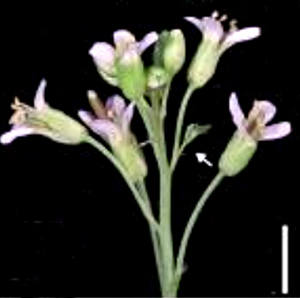Plants consist of fundamental units of growth called phytomers (leaf or bract, axillary bud, node, and internode), which are repeated and modified throughout shoot development to give plants plasticity for survival and adaptation. One phytomer modification is the suppression or outgrowth of bracts, the leaves subtending the flowers. The floral meristem identity regulator LEAFY (LFY) and the organ boundary genes BLADE-ON-PETIOLE1 (BOP1) and BOP2, have been shown to suppress bract development in Arabidopsis, as mutations in these genes result in bract outgrowth. However, much less is known about the mechanisms that promote bract outgrowth in Arabidopsis mutants such as these.

In their new study titled "AINTEGUMENTA and redundant AINTEGUMENTA-LIKE6 are required for bract outgrowth in Arabidopsis", graduate student Darren Manuela and his mentor Dr. Mingli Xu report that the MADS-box genes SUPPRESSOR OF OVEREXPRESSION OF CONSTANS1 (SOC1), FRUITFUL (FUL), and AGAMOUS-LIKE24 (AGL24) play more important roles than BOP1/2 and LFY in bract suppression, and that AINTEGUMENTA (ANT) and the partially redundant AINTEGUMENTA-LIKE6 (AIL6) are necessary for bract outgrowth in these mutant backgrounds. Moreover, misexpression of AIL6 alone is sufficient for bract outgrowth. These data reveal a mechanism for bract suppression and outgrowth and provide insight into phytomer plasticity.